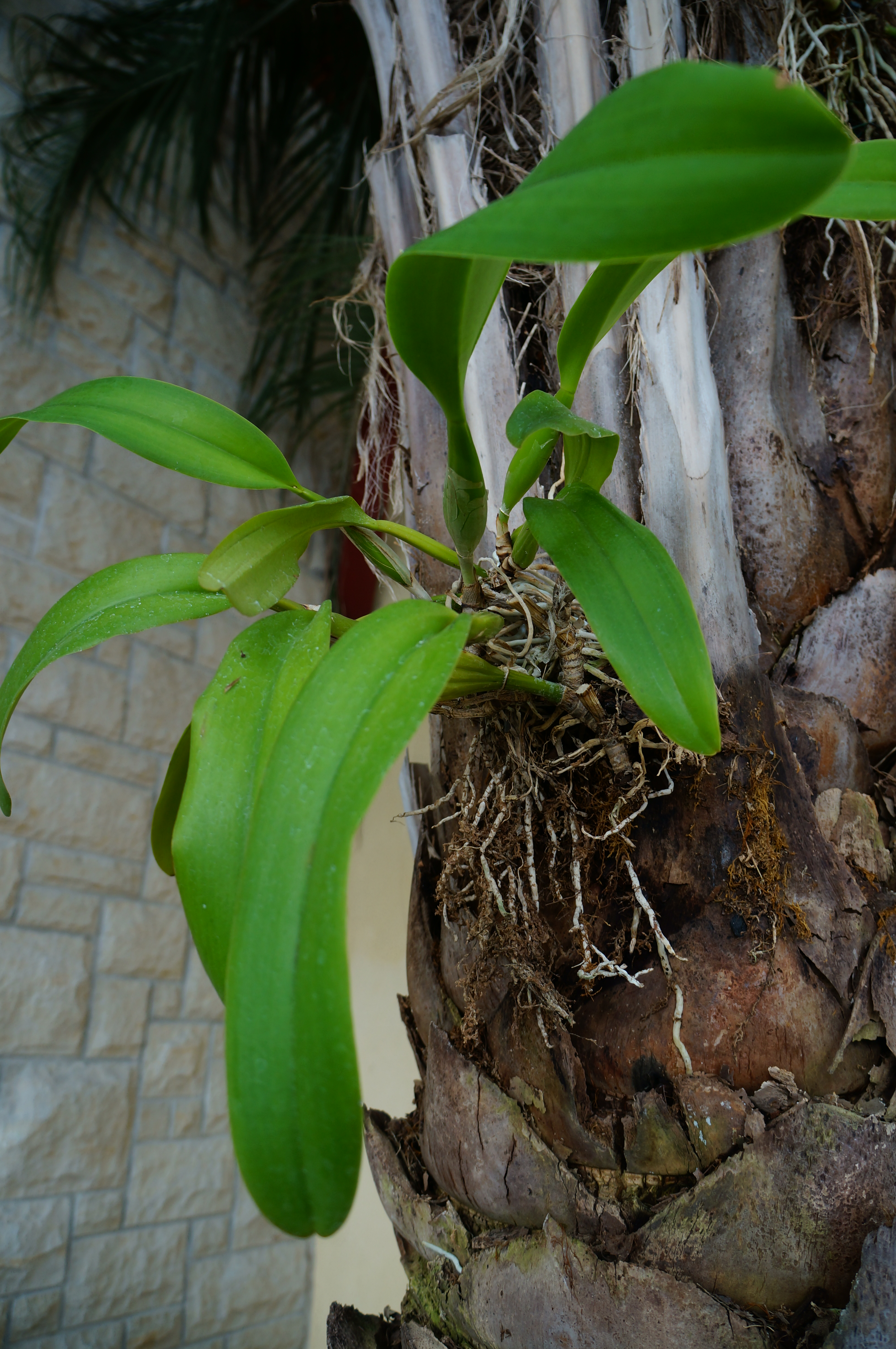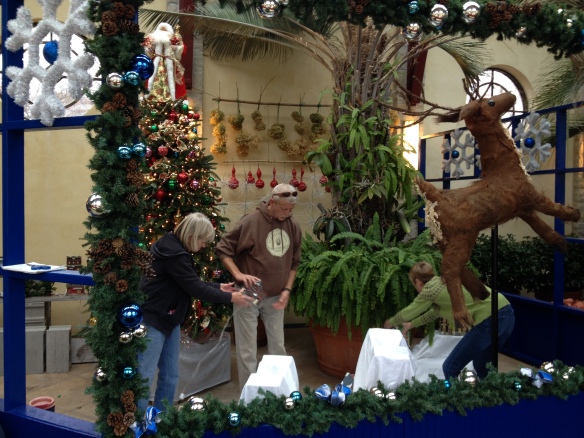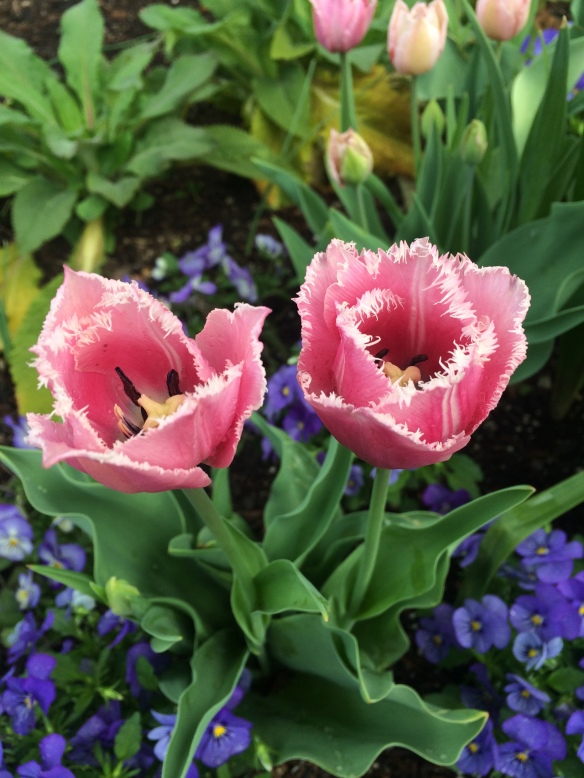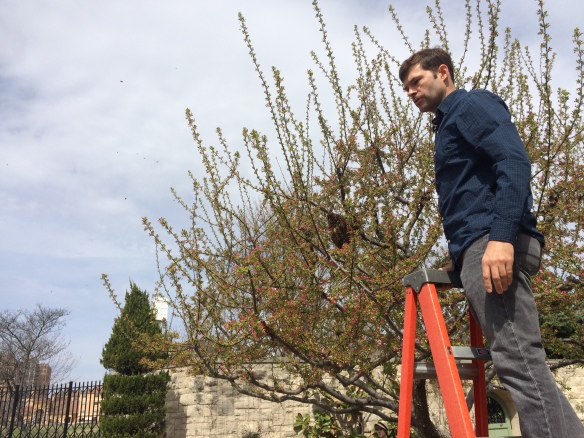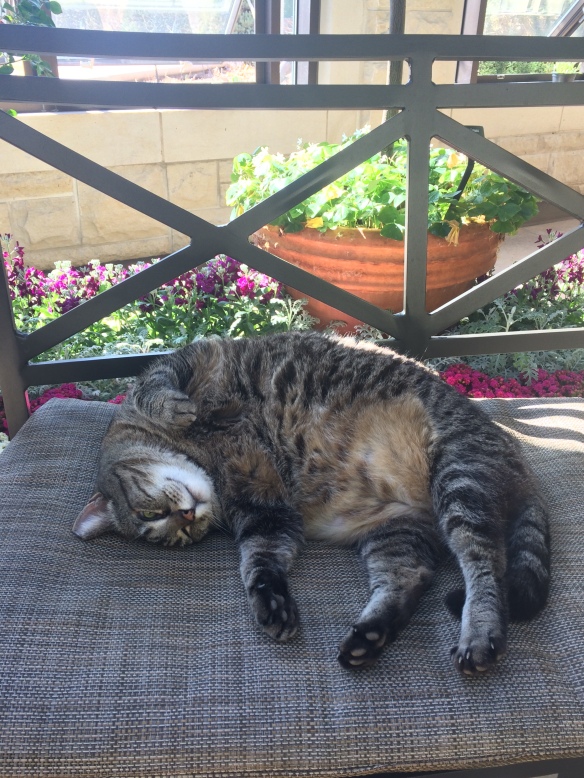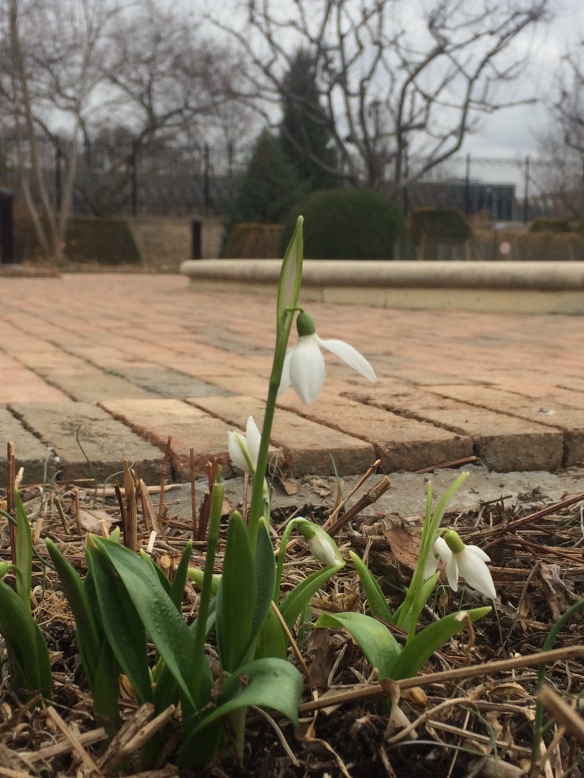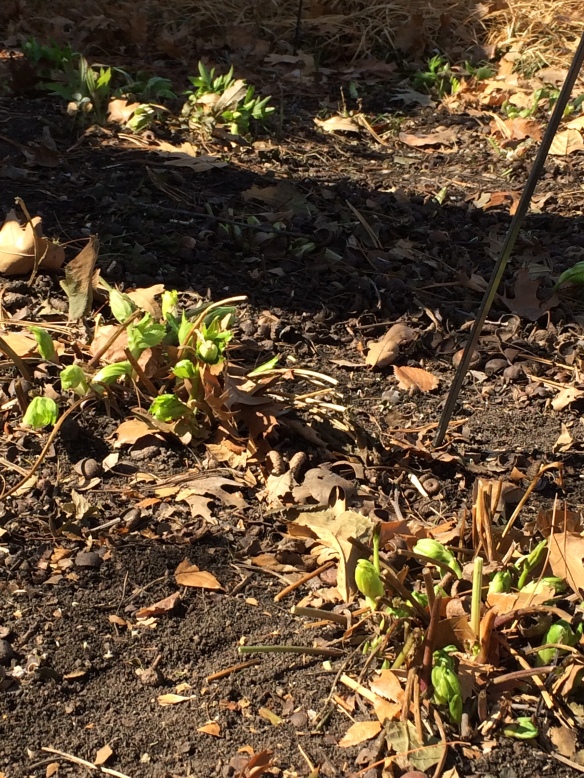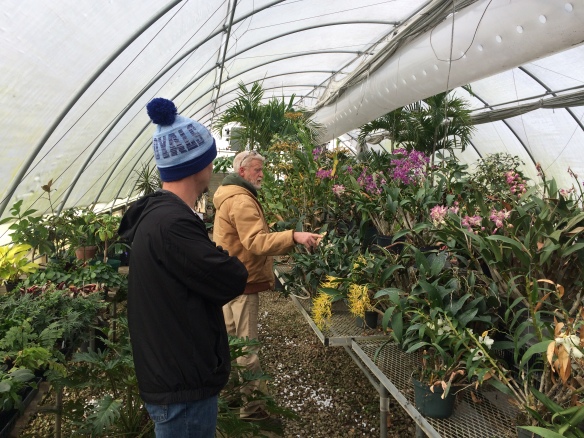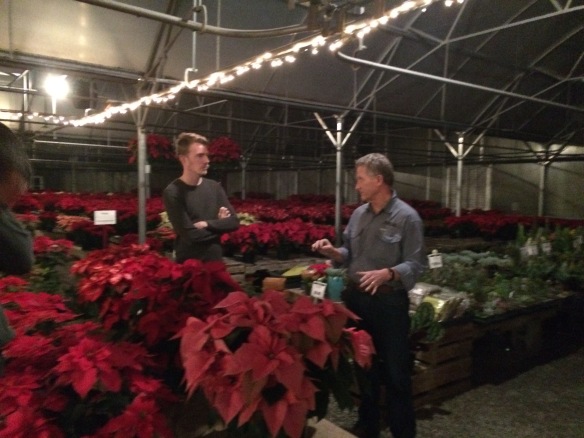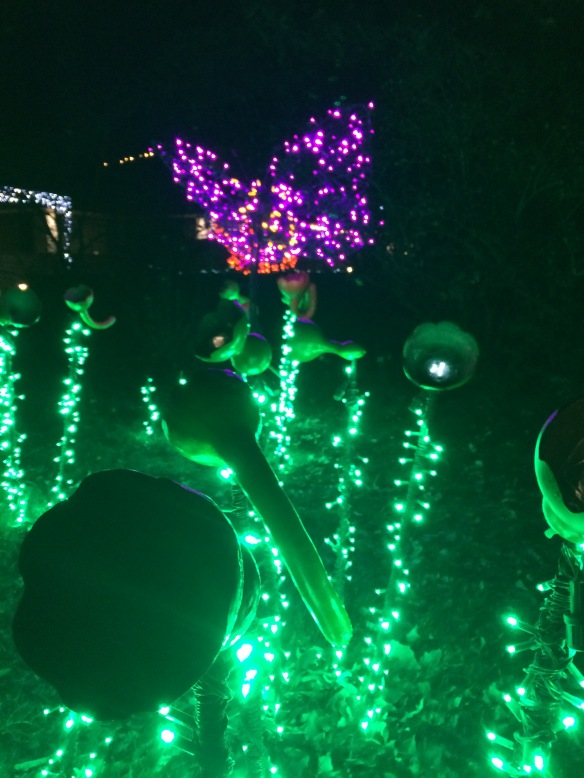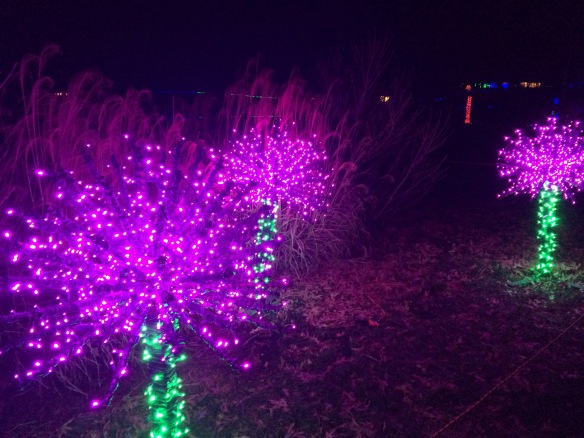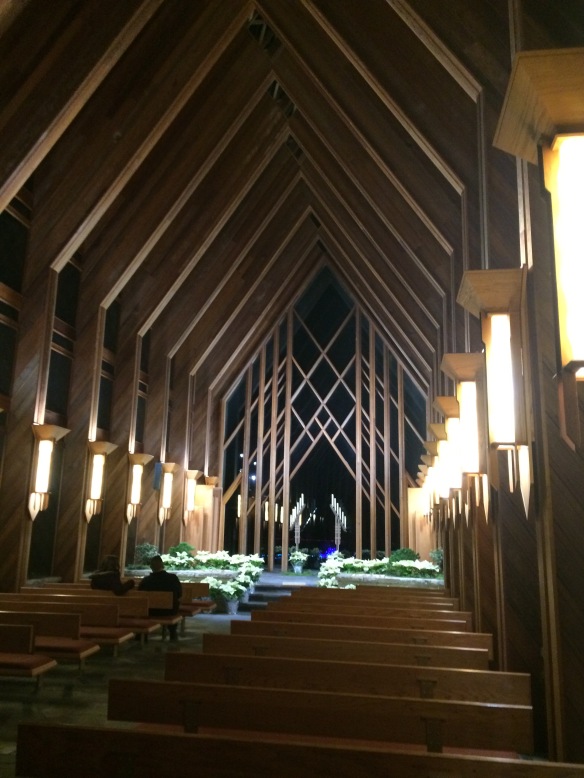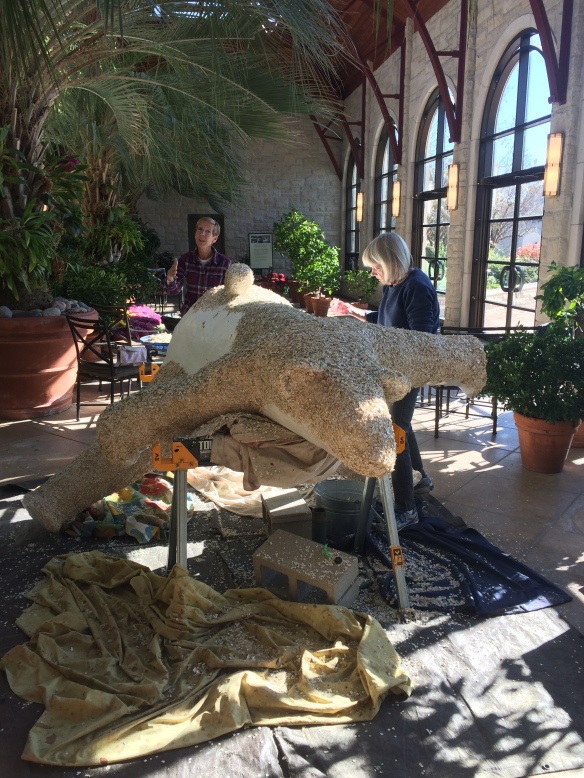As the new senior gardener and author of this blog, I should introduce myself. My name is Bryan Boccard, and some of you may already know me from my time at Powell Gardens as the supervisor of Core Gardens and senior gardener of the Perennial Garden. I’m still relatively new to Kansas City, having only moved here in May 2017. Prior to Kansas City, I spent nearly 4 years in horticulture training at Longwood Gardens in Kennett Square, Pennsylvania. Originally however, I am from Wisconsin, which leads me to my next topic, this cold weather!

Over 100 flats of our violas covered in snow a couple weeks ago
This fall was a challenging one for us at the Kauffman Garden. Though the summer was hot and dry, we had a rather wet fall which made it difficult to plant our spring bulbs because the ground turned into a muddy mess. On top of that, winter moved in hard, fast, and early. The early cold weather affected us in a few ways. With extended temperatures below freezing, the top couple inches of soil froze solid making it difficult to near impossible to plant bulbs at times.

Our first round of planting was snowed on.
Additionally, we implemented a unique bulb planting technique. In most of our tulip beds, we interplanted the tulip bulbs with violas, dianthus, dusty miller, or pansies. That will give us some winter interest (aside from bare dirt and decaying ornamental grasses). The violas and dianthus are also fairly hardy, especially in a mild winter. They will rebloom in spring and create a colorful, flowering groundcover underneath the tulips. This was my first time planting violas as a groundcover for bulbs, so I’m looking forward to seeing the result next spring. Though I will say we are all a bit nervous about how well they will establish if the temperatures return to as cold as they had been recently. We had to keep our flowers under frost blankets for a few weeks since the temperatures had been dropping as low as 12 degrees some nights! After being outside for three weeks, however, they were as hardened off as they’re going to get so we bit the bullet and got them planted in the ground before it froze completely solid for the winter.
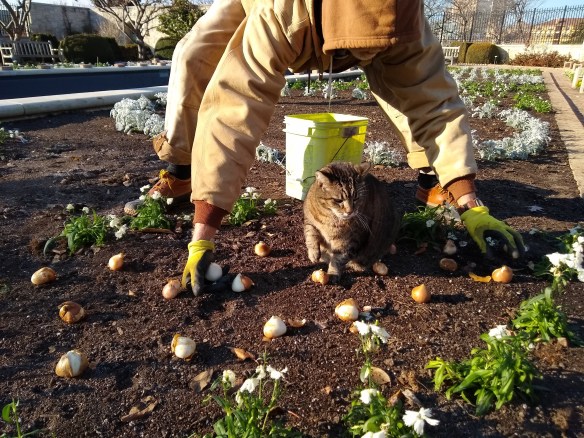
Krazy helps us by directing where to place the tulip bulbs.
I’d like to discuss the fall planting of violas and dianthus a bit more in depth because I have received so many questions about it. The first thing to understand is what the differences are between violas and pansies. In simple terms, violas are winter hardy and pansies are not. However, it is a bit more complex than that. “Pansy” is the common English name for a complex hybrid of three different Viola species: V. tricolor, V. lutea, and V. altaica. The latin name for this very hybridized group of pansies is Viola x wittrockiana. In general, pansies have large flowers, some up to 5” wide! And they are also not considered perennial or winter hardy.
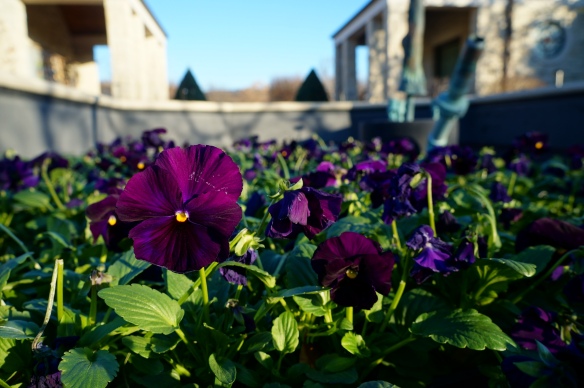
“Pansy” — Viola x wittrockiana
As for what people colloquially refer to as “violas”, they are generally referring to hybrids of the the species V. cornuta. This group of violas is usually much hardier than pansies and is considered perennial in many areas. They also have smaller flowers, usually no more than two inches wide. In a word, all pansies are violas, but not all violas are pansies.

“Viola” — Viola cornuta
How does this impact our bulb planting design? For the most part, we interplant our tulip bulbs with cultivars of V. cornuta, as well as some Dianthus. If the weather is mild enough for them to establish roots before the ground freezes, most of them will come back and bloom in the spring. It is important to note that they do need to be periodically watered in the winter. You probably know firsthand how our cold, dry winters can chap your skin — the same thing happens to plants! Because of this, it is helpful to water perennials with evergreen foliage during mild sunny spells. (The same can be done for broadleaf evergreen shrubs such a camellias and hollies which often suffer winter burn in our area).
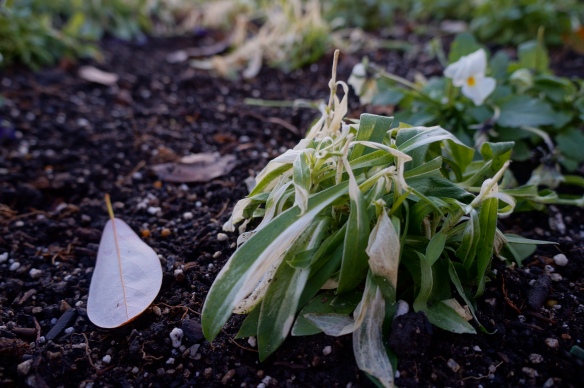
You can see here an example of one of our dianthus which suffered from both a hard freeze and drought stress.
What happens during winter warm spells is this—the air is much warmer than the frozen ground, so the leaves of broadleaf evergreens heat up and begin to transpire. However, the ground is often still frozen which means their roots can not take up any water. The plants transpire more water than they can take up. Correspondingly, the leading cause of winter death for broadleaf evergreens in our areas is not cold, but rather drought stress! If you come visit the garden on a warm sunny day this winter, you will probably see one of us watering the violas and dianthus to keep them hydrated. Stay tuned to see see how our viola/tulip combos turn out in the spring, and better yet, come see them for yourself!

Aside from our planting struggles outside, we have also been busy away creating a beautiful holiday display in the orangerie. Featuring 19 different poinsettia cultivars, along with cyclamen, chrysanthemums, stock, and eucalyptus, you can’t find anything else like this in Kansas City.
Our 12-feet tall, decorated Fraser fir is inspired by an old German legend. We have placed several artistically inspired nests in the tree along with rustic colored ornaments, crab apple branches, icicles, and a handful of playful birds. Thankfully, our resident kitty, Krazy, has left the birds well enough alone. Our holiday display will be up into January, so please come by and enjoy the seasonal flowers!
– Bryan Boccard







